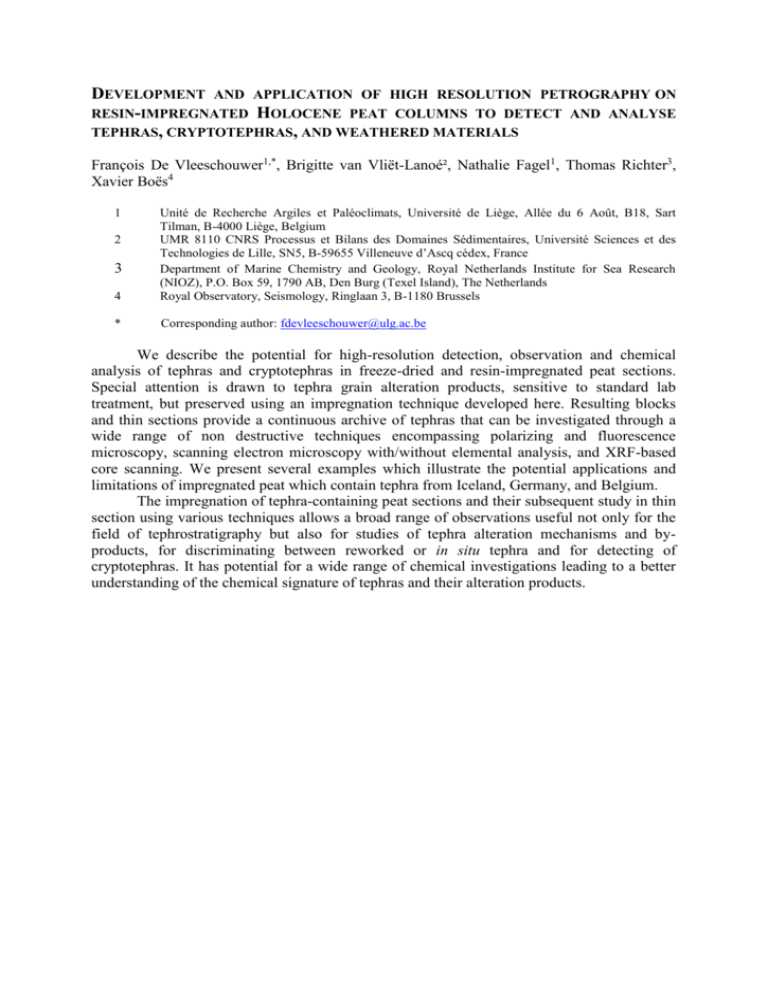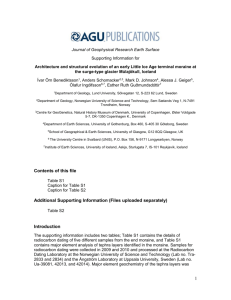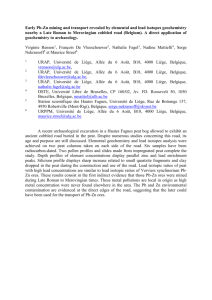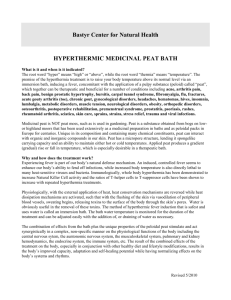We describe the potential for high-resolution detection
advertisement

DEVELOPMENT AND APPLICATION OF HIGH RESOLUTION PETROGRAPHY ON RESIN-IMPREGNATED HOLOCENE PEAT COLUMNS TO DETECT AND ANALYSE TEPHRAS, CRYPTOTEPHRAS, AND WEATHERED MATERIALS François De Vleeschouwer1,*, Brigitte van Vliët-Lanoé², Nathalie Fagel1, Thomas Richter3, Xavier Boës4 1 4 Unité de Recherche Argiles et Paléoclimats, Université de Liège, Allée du 6 Août, B18, Sart Tilman, B-4000 Liège, Belgium UMR 8110 CNRS Processus et Bilans des Domaines Sédimentaires, Université Sciences et des Technologies de Lille, SN5, B-59655 Villeneuve d’Ascq cédex, France Department of Marine Chemistry and Geology, Royal Netherlands Institute for Sea Research (NIOZ), P.O. Box 59, 1790 AB, Den Burg (Texel Island), The Netherlands Royal Observatory, Seismology, Ringlaan 3, B-1180 Brussels * Corresponding author: fdevleeschouwer@ulg.ac.be 2 3 We describe the potential for high-resolution detection, observation and chemical analysis of tephras and cryptotephras in freeze-dried and resin-impregnated peat sections. Special attention is drawn to tephra grain alteration products, sensitive to standard lab treatment, but preserved using an impregnation technique developed here. Resulting blocks and thin sections provide a continuous archive of tephras that can be investigated through a wide range of non destructive techniques encompassing polarizing and fluorescence microscopy, scanning electron microscopy with/without elemental analysis, and XRF-based core scanning. We present several examples which illustrate the potential applications and limitations of impregnated peat which contain tephra from Iceland, Germany, and Belgium. The impregnation of tephra-containing peat sections and their subsequent study in thin section using various techniques allows a broad range of observations useful not only for the field of tephrostratigraphy but also for studies of tephra alteration mechanisms and byproducts, for discriminating between reworked or in situ tephra and for detecting of cryptotephras. It has potential for a wide range of chemical investigations leading to a better understanding of the chemical signature of tephras and their alteration products.











